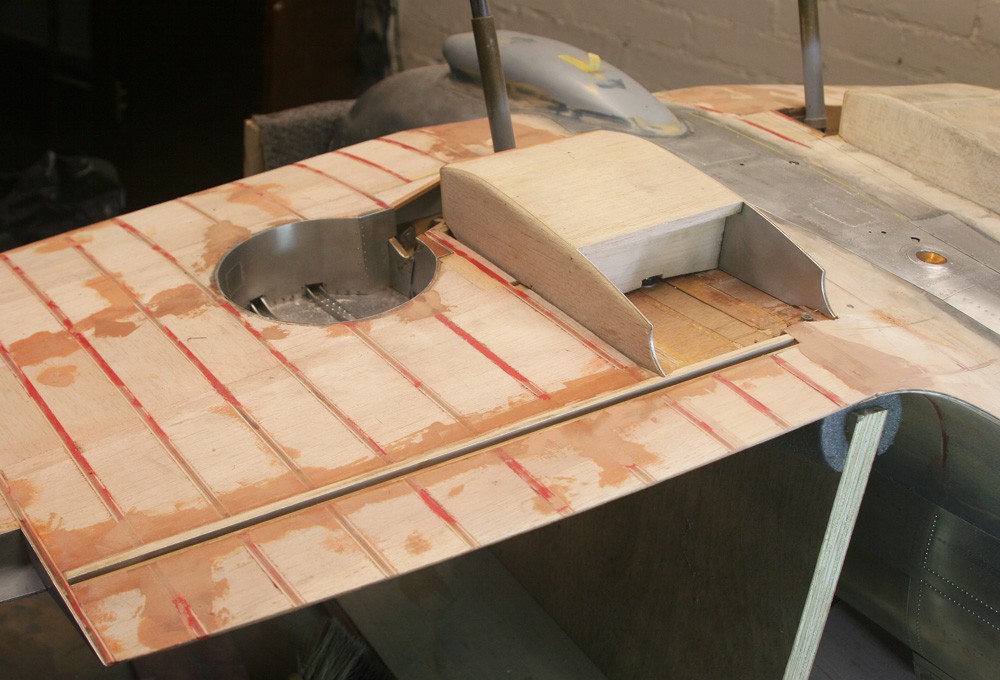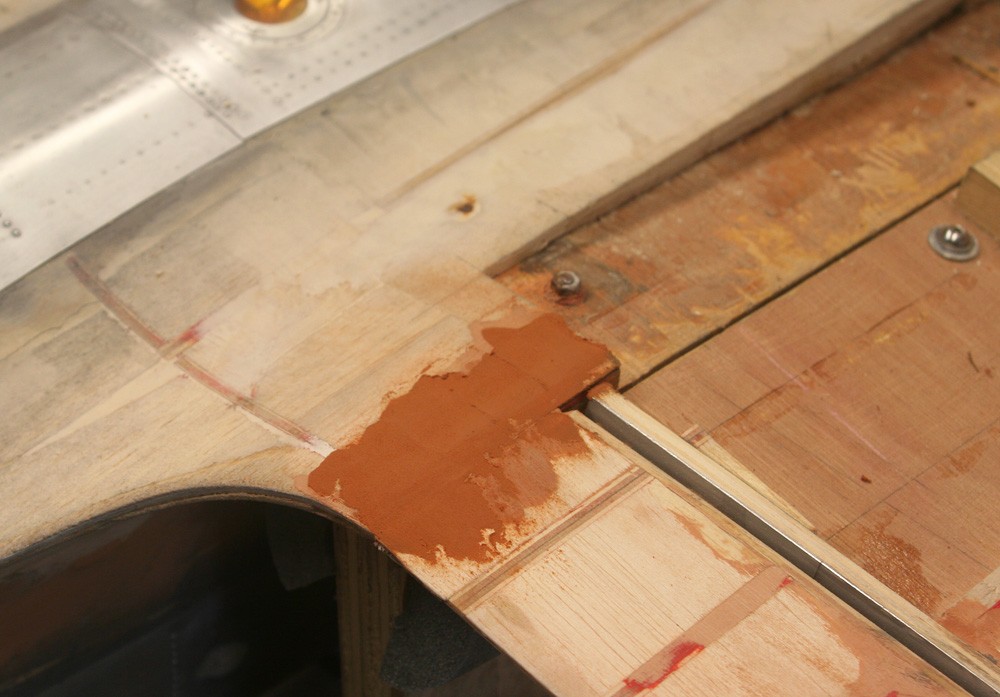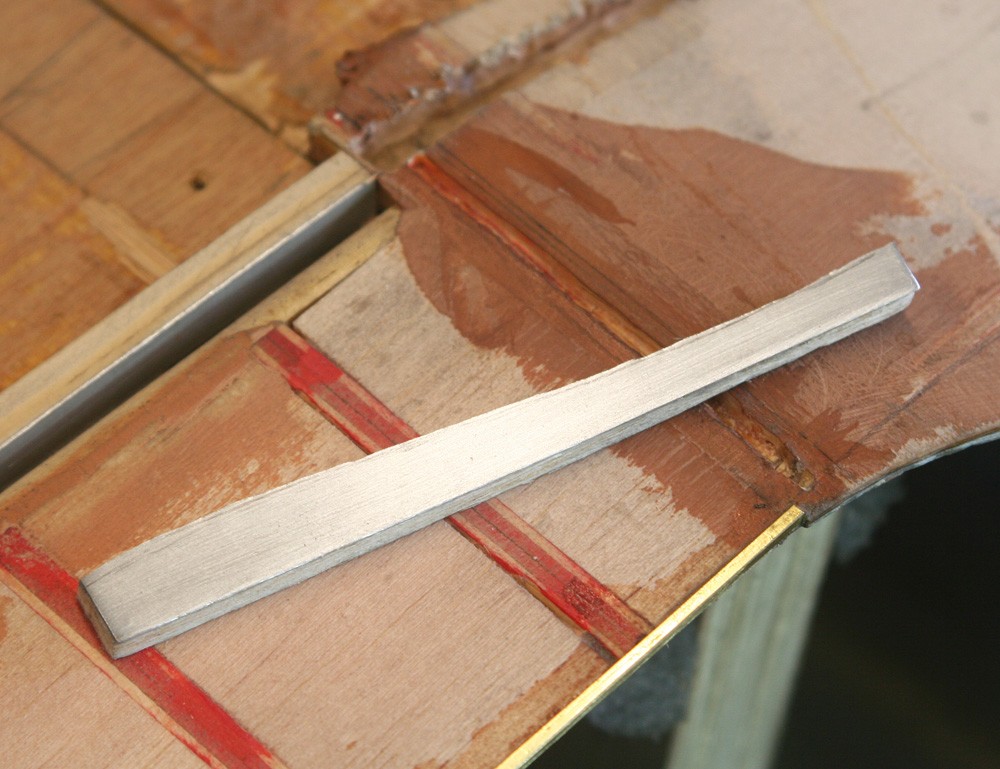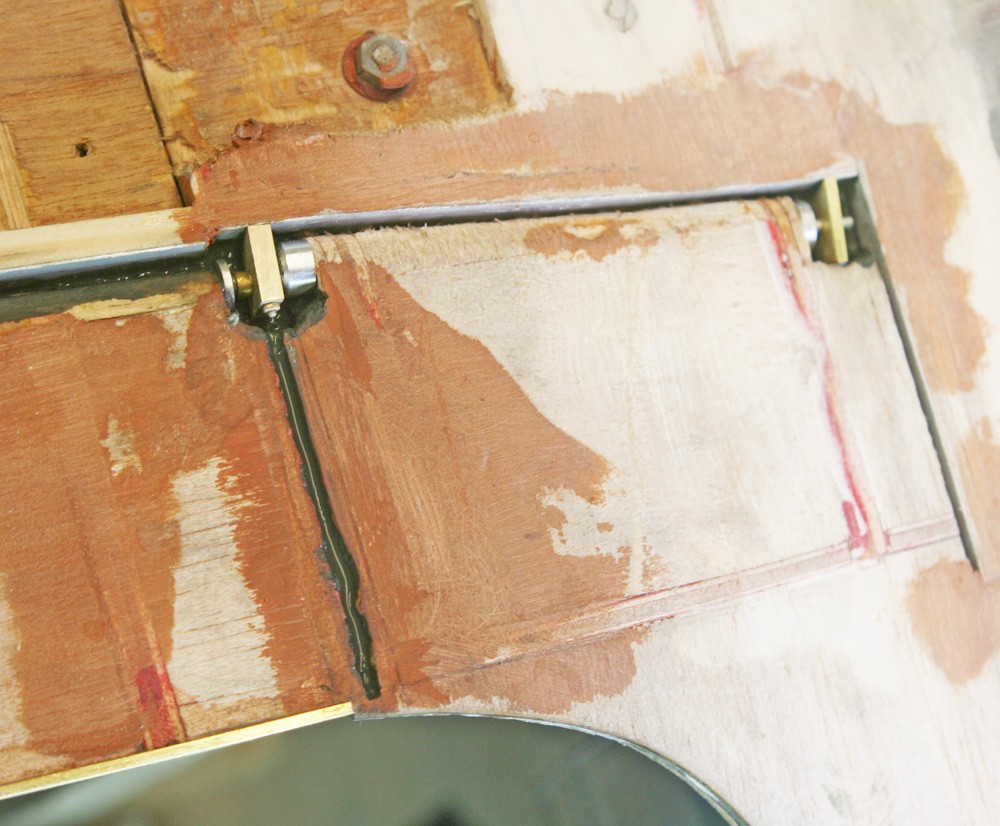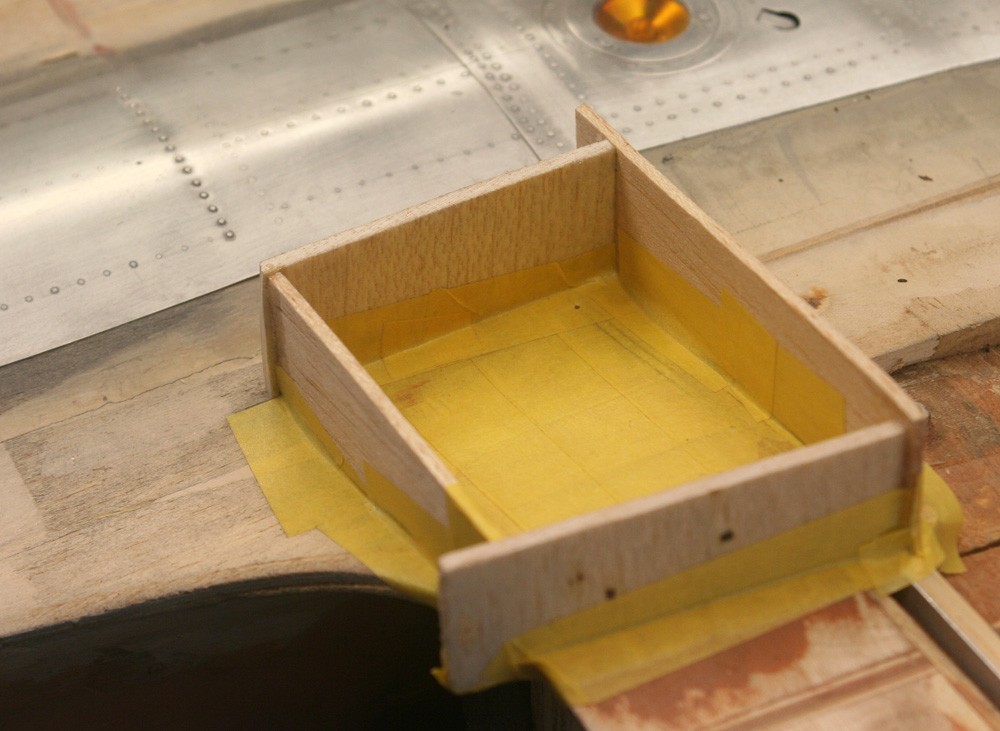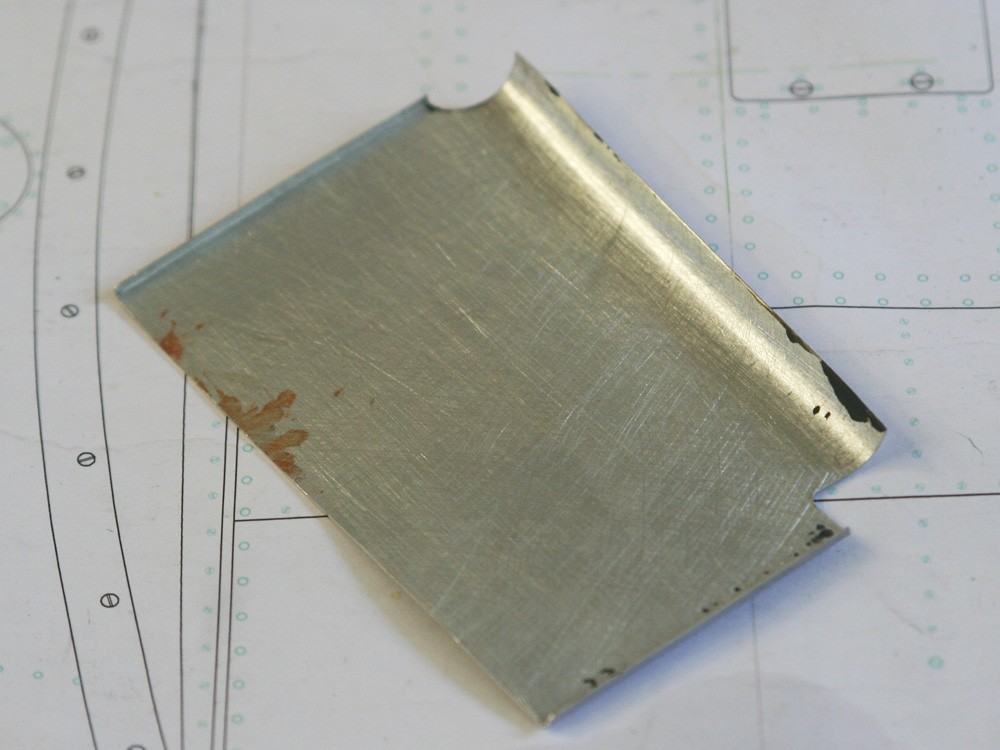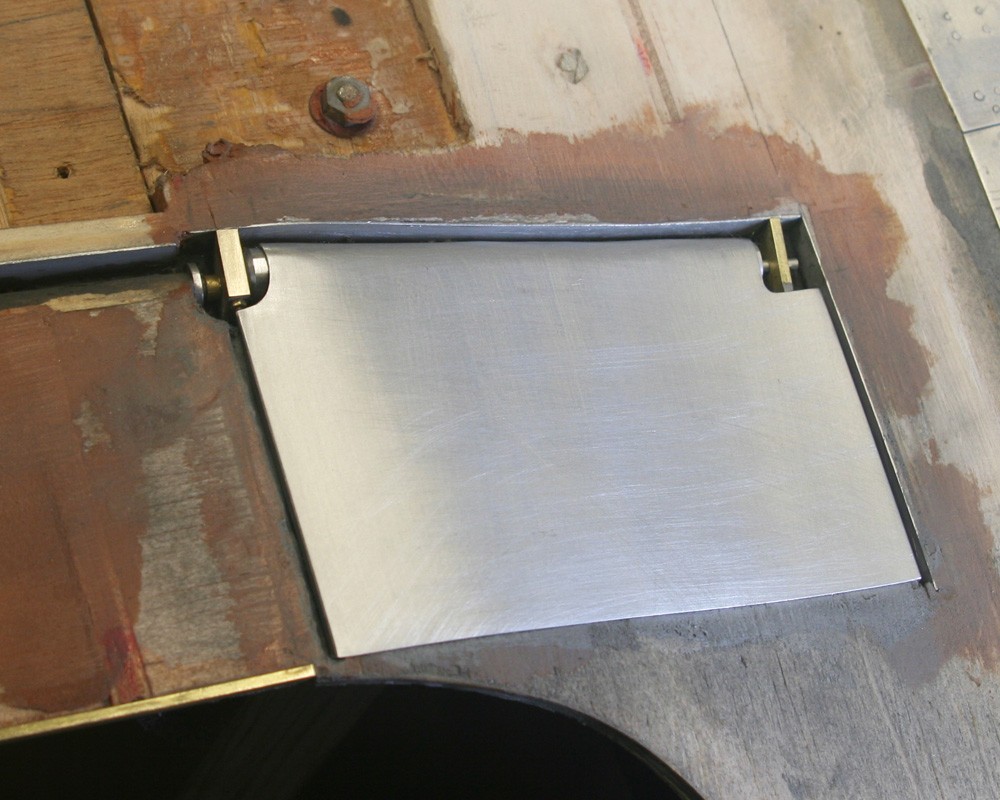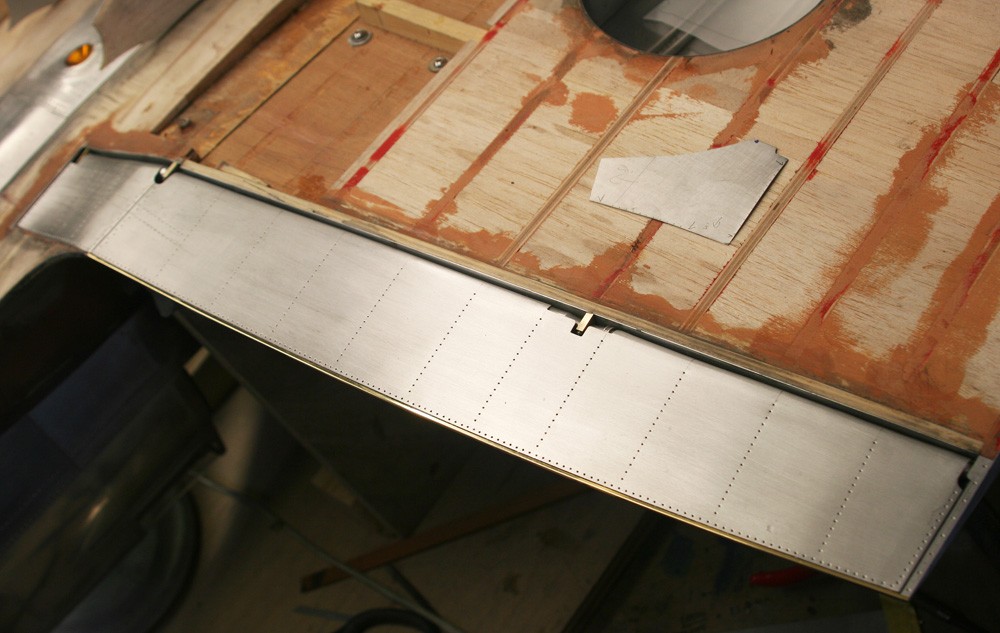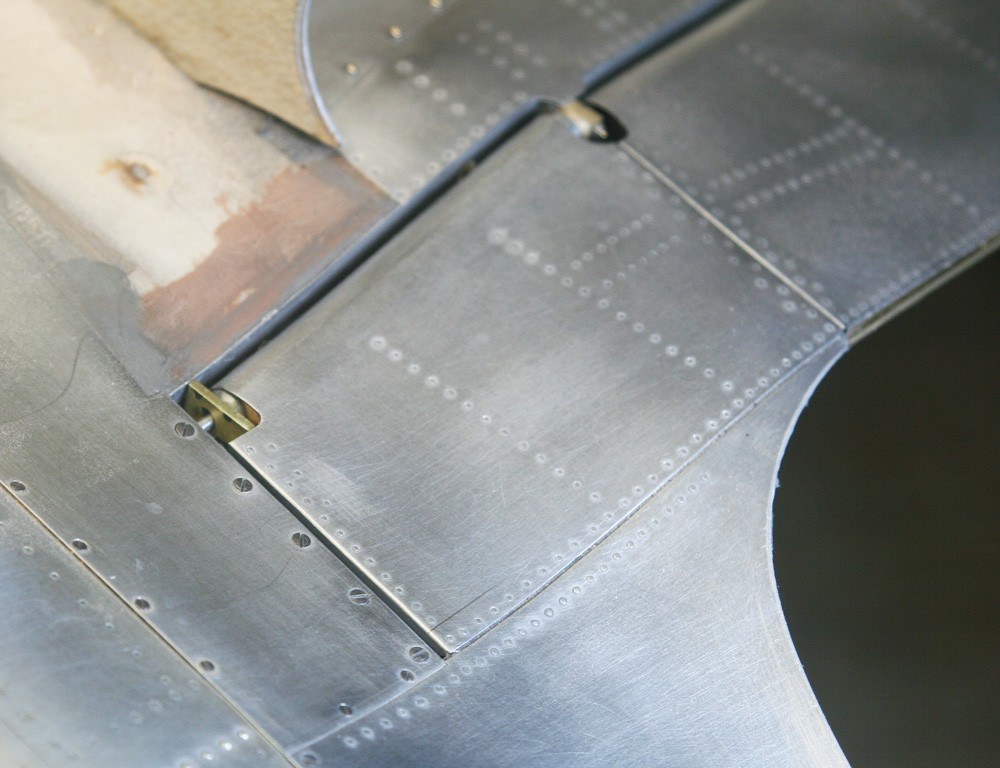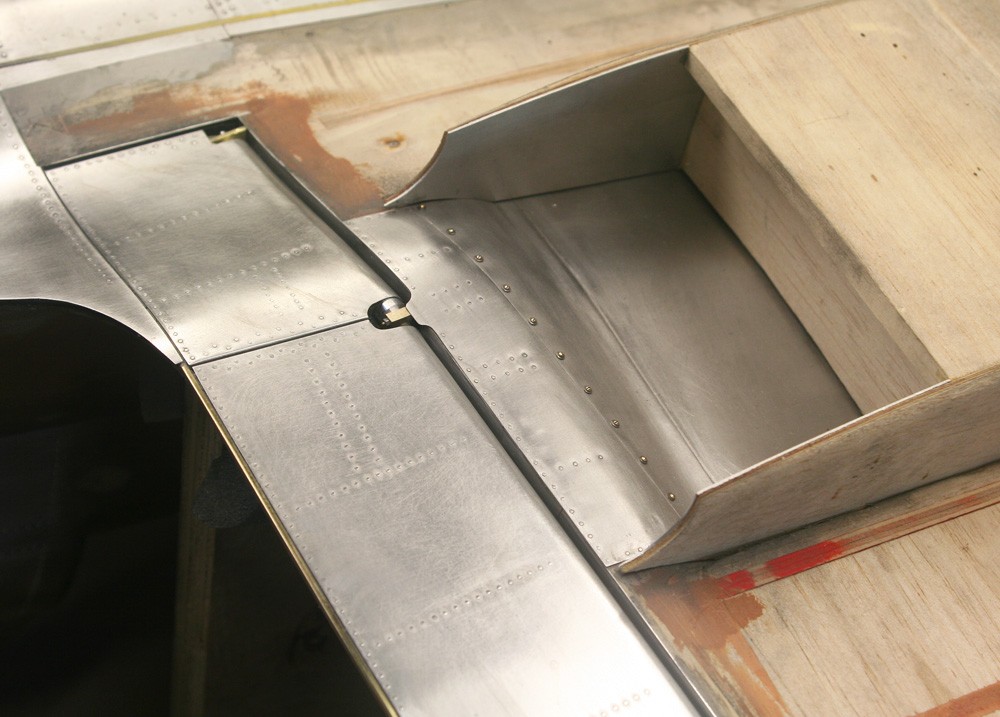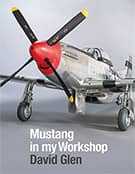Finishing the flaps
Friday, 13th January, 2017
I have described how, when building the wooden wing cores, I neglected to provide for the flaps – an oversight that required some tricky remedial surgery (see diary entry ‘Forgotten flaps’). Now with the wings fitted permanently I could get on with completing the job. This involved:
- Extending the routing-out of channels in the balsa and ply across the dihedral break, so as to delineate the short inner section of the split flap
- Machining and installing all visible components of the spar tube and hinge and pivot assemblies
- Providing for the delicate wedge-shaped and recessed moulding that stiffens the underside of the wing trailing edge
- Installing the final litho plate skin and adding all rivet detail.
As my pictures reveal, I was not too fussy about the routing-out. The objective here is to create channels in the underlying balsa and ply to give the impression of a three dimensional structure and the ‘illusion’ of an internal wing void visible around the sides and particularly at the forward edges of the flaps. The ‘precision’ comes in the ‘rebuilding’, including the grafting in of such internal structural members that can be seen.
As previously explained the outer spar tubes are basically lengths of deal quadrant over which the flap lower skin is shaped. Only the visible extremities of the alloy spar tubes and their conical end-spar sockets are machined in metal and grafted into position in the routed out channels, taking great care to ensure alignment. Again, my pictures show how this was done.
Close inspection of the Spitfire’s flaps in the closed position will show that they do not shut to the top wing like two leaves in a book, but rather the wing trailing edge is recessed to accommodate the flap at its extremity by means of a delicate wedge-shaped mounding which scales to less than 1/8 in. deep and some 18 in. long! This posed a significant problem, because to machine such a delicate and extended section in brass or alloy was so far beyond my means or abilities as to preclude even the briefest consideration.
As so often in such situations I was forced to compromise, and in the end I used commercially available brass angle section. Yes, this falls hopelessly short of the real thing, but it proved well suited to gluing in position along the knife-like trailing edge, and with the exposed sharp outer corner rounded off, it serves well enough. Most importantly, it ‘finishes’ the trailing edge in the region of the flaps, and it gives the impression of a neat and tidy recess to accommodate the flap trailing edge, and that is what I set out to achieve.
The biggest, in fact only, problem with alloy-skinning the flap came with the short inner section, and this because it was extremely difficult to reconcile the precise fore-aft curvature of the metal skin round the short spar tube with the conflicting gull-wing geometry so obviously manifest in this region of the wing root. This proved so challenging that I resorted to taking a resin cast of the entire inner flap surface so as to provide a hard and resilient mould over which to pre-form the annealed litho plate.
